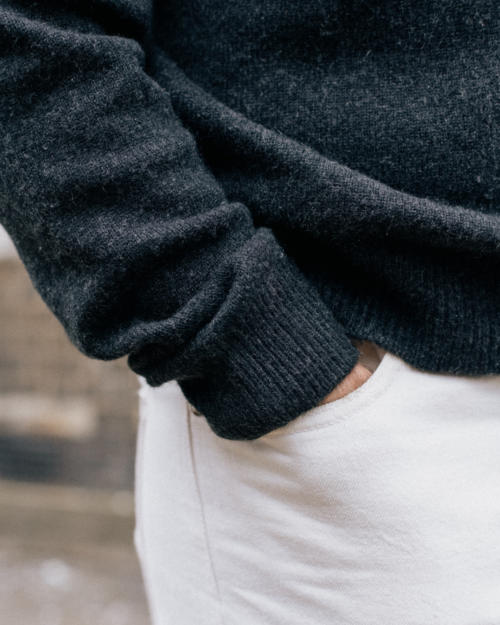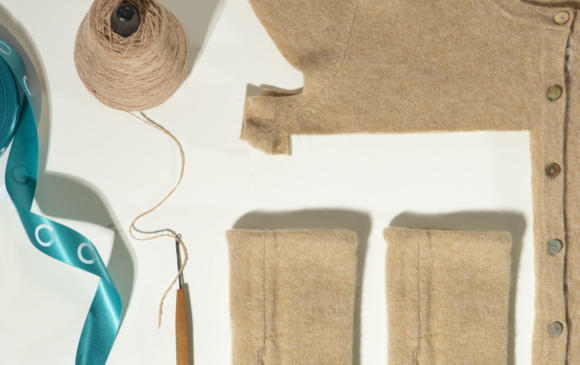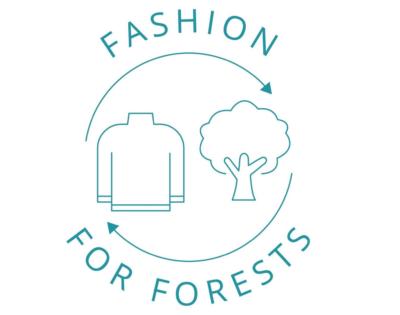Repair, recycle and de-pill knitwear: Cashmere Circle
One of the good things about writing about caring for clothes, is that it spurs me to be better at it myself.
I’m not too bad at most things, by the standards of Permanent Style. I brush and put cream on my shoes; I steam and brush my suits (rather than dry cleaning them); I am assiduous about moths. And of course all this makes me much better than the average guy.
But I’ve never been as good with knitwear. I don’t allow it enough room in the wardrobe, which leads to pilling, and I don’t wash as much of it as I should - even though it’s easy.
Whenever I write about caring for knitwear, it spurs me to improve. That might be why I’ve written about it so much - see video on care here, an article on darning, and a previous piece on repairs.
Today I’m doing it again; I hope it has a similar effect on you.
It’s good to wash knitwear regularly if not frequently. Certainly a couple of times a year. A simple, short soak in warm water and soap, and a little agitation is enough.
However, a really good refurbish and repair is also really worth it, and cannot be done yourself.
This includes a thorough depilling, a repair of any small moth holes, and perhaps some alterations.
It’s something I’ve done before with the company Love Cashmere in Scotland - but I tried another recently, Cashmere Circle, and wanted to add them to people’s lists.
It’s also worth having more than one because these companies use a network of people at Scottish mills, who use their downtime to take on extra work. There are few full-time employees, particularly for repairs, and so sometimes communications and lead times can be unreliable.
Good refurbishing of knitwear can make it look as good as new. It’s hard to believe that some people maintain great-looking knitwear for 20 years or more, until you see what good care like this can do.
My charcoal hoodie pictured is from Ralph Lauren Purple Label. I bought it in the sale about eight years ago, and I love it.
The neckhole is perfect - a little high, a little small. The hood is quite closed at the front, so it sits close to the back of the neck, rather than dropping down your back. And I like how the two sides of the hood overlap at the front.
It is also, as you’d expect, in a lovely soft and thick cashmere. It’s been worn so much, though, that it has pilled under the arms, and a little on the belly. (For more on why good things pill, look out for our upcoming article in the Guide to Knitwear series.)
I’ve tried a little de-pilling, with an emery board and with a razor, but neither are perfect. The emery board has a habit of pulling up fibres as it removes pills, while the razor misses quite a lot.
I still think this is worth doing occasionally yourself, but it makes a difference sending it to a professional. My charcoal hoodie came back from Cashmere Circle looking and feeling as good as new. Washed, pressed, de-pilled and with a small hole fixed too. (The photos seem to make it look a little pilled still, but that’s just the fluffiness.)
And of course, it’s not new. I haven’t used any more of the world’s cashmere to buy a new sweater, and I’ve spent a lot less money than a new piece. It’s a cheaper and a more sustainable retail high.
“The most sustainable clothes are the ones you already own,” as Ross Powell at Cashmere Circle puts it.
I spoke to Ross over Zoom to learn a little bit about the company.
“There’s two of us, me and my partner, in London. Then we use an office in Edinburgh to help share the work out among local people,” he says.
“We’ve seen a steady increase in demand, mostly around the theme of sustainability. And we can do any type of knitwear - anything knitted basically. Cashmere is just the most valuable and the most popular. Plus the name sounds better.”
Ross points out that fewer mills do refurbishing services these days, because it’s often not seen as worth the hassle. Also, while good shops might repair a piece of knitwear for you - sending it back to the mill they use - they’re unlikely to want to simply wash and refurbish it.
Just as important is the fact I can send all my knitwear to one place. I also gave Ross and his team a cardigan from Connolly to alter, so a different brand and indeed from Italy rather than Scotland. If everything had to go back to different places, I’d be much less likely to do it.
A few readers have asked about knitwear alterations recently, so it’s worth explaining how limited this usually is.
Knits normally need to be altered by a factory, which has fashioning machinery, rather than a tailor using a regular sewing machine.
They also have no inlay, no spare material inside the seams, so things can be taken in but not taken out.
Lastly, my experience has been that it’s worth keeping any alterations very simple. Pretty much the only thing I change is slimming the body of a piece. And even there, a miscommunication led to Love Cashmere slimming something too much for me in the past, making it unwearable.
With this Cashmere Circle alteration, I pinned the cardigan up the side seams, and then tried it on, to make sure I was happy with that shape. I then sent photos to them, to make sure it was understood where the new seam should be. Fortunately, the result was spot on.
When I put my results on Instagram recently, one reader asked whether I used Cashmere Circle to wash all my knitwear. No, absolutely not. That would be very indulgent, and perhaps a little lazy.
Still, if I did then it would be more responsible and sustainable than buying something new. So if you find you just never wash your knitwear, it might be worth considering.
And if you are going to get rid of knitwear, please don’t just throw it away. Give it to a friend, give it to charity, and as a last resort use something like Cashmere Circle’s recycling service.
Another reader commented recently that their knits looked good for about two years, then wearable for up to five, before being thrown away. That isn’t quite disposable fashion, but it’s not far off.
I think we can all do better than that.
www.cashmere-circle.co.uk. The laundry service costs £35, full revive and repair is £45, and elbow patches are £65




































The prices seem really reasonable – great idea. I’m not sure what it was, but I used to have such a mental block when it came to washing knitwear – maybe it was from many, many ruined/shrunken disasters previously (my fault, I now know how to do it better!).
It’s a shame there aren’t more places – from an environmental perspective having to post things there and back isn’t ideal I guess? Or actually would it still be better than treating clothes as entirely disposable? Probably – what do you think?
Still much better than disposing of the clothes. Particularly as it’s going within the UK so would likely be by road or train, not air.
With washing the knitwear, if you’re still uncertain at all, I’d say start cautious. Wash something that isn’t very precious, in only tepid water, with minimal agitation. Roll it in a towel to get rid of the excess water, then dry flat on a rack. If it looks lifeless at all afterwards, some steam from an iron (perhaps while hanging) is good. That kind of cautious start can give you confidence and make it seem more routine I think.
In fact, also, just steaming the knit can make a big difference too. And of course a lot less scary.
Hi Simon,
Many thanks for a very useful post. I was wondering if you could make one on washing the knitwear, for I think this is the area many people struggle with. Sorry if you’ve done this before – I don’t think I’ve seen anything on the PS yet.
It has been explained on this video with Audie, if you didn’t see it.
Thank you! Strangely enough, I prefer reading texts, rather than watching videos, but I’ll definitely have a look at this one.
Yeah, I don’t think that’s strange really. It’s so much easier to browse and go back to text than video.
It can be a little nerve racking for your first one. My wife washed one jumper following Audie to the letter ( including listening to the radio) and it worked perfectly.
The following weekend she washed a further 12 without incident, the only awkward one was a really thick jumper which, even with the towel method, took 5 days to dry. In retrospect better to let a professional take over on this one.
I think the quality of detergent is important and Tenemoll has been our goto product for 15 years.
Thanks Mike, nice to hear a first-hand account
Actually I was the one to comment about 5 years… and the point for it was buying cotton Ralph Lauren or similar knitwear in tk max, with a big discount, treat it like a long sleeved T-shirt, so I don’t have to care. So I can just chuck it in a washing machine with the rest of my laundry, hang dry it and don’t have to be too sad, if I accidentally put them on 60* or in the dryer.
Same with jeans/chinos. Im just not hip enough to walk around with holes patched on my clothes, so if I blow the crotch in 2-3 years on Lewis 501 that I got for 50£ or Hackett/Ralph Lauren chinos for 30-40£, just from commuting, I’d much rather get 5 pairs of those from tk maxx and be set for a decade than spend 300£ for a ‘nicer’ denim that will last me as long…
But Thanks to you my wardrobe actually has split into 2 tiers, 1. I don’t have to care but I want it smarter than a tracksuit or a sweatshirt. And 2. I did my best to buy the best I can afford and I’m willing to take care of it the way I should.
Thanks Martins.
My point on buying the cheaper stuff is that it isn’t that environmentally friendly. Either to product or to put into landfill.
By “the cheaper stuff”, do you mean the cheap prices or the particular brands? Stuff at tk maxx is usually heavily discounted from its original prices, so if you know what to get the quality can be nice.
True, I’m assuming things at full price
A bit unrelated, but are the trousers you’re wearing here by any chance the Anthology Civilman in white denim? If so, may I ask if you find them versatile for everyday use, or limited in any way, compared to other white/cream jeans or chinos? Thanks!
No they’re not, they’re normal quite denim from Levi’s.
Did you see my comments on the Civilman in our recent Top 10 piece?
Ok, thanks! Will check the recent Top 10 piece.
Hi Simon,
I too, like another one of your readers find washing knitwear a little daunting, having that ‘mental block’; keep thinking I’m going to ruin it.
I like to add that I have a Ralph Lauren zipper knit cardigan that is over 10 years old. It is lambswool and had pilled quite badly and I was close to calling time on it. I then invested in a Philips Fabric Shaver, which yielded brilliant results and the cardigan is now probably good for another 10 years at least. Does take a bit of practice with the fabric shaver. Go soft and slow on the garment, and I found it works best on plain knits rather the cable knits or ribbed designs. The shaver is relatively inexpensive and I did exactly as you’ve advised to ANT, tried it out on another garment that wasn’t precious to me.
Great recommendation, thanks JSB
Second that completely on the Philips Fabric Shaver. The (very slightly) cheaper unbranded ones aren’t very good, but the Philips one is brilliant. Would recommend it to anyone.
After washing I suggest you do any ironing when the knitwear is still slightly damp, inside out, and through an old tea towel, to avoid visible scorches in case you get the temperature wrong. If an area resists smoothing come back to it. And be sure that it is dry, after gentle drying, before putting away
My grandmother’s advice was to look after it as if you would never be able to afford another.
Thanks Triskel, lovely sentiment.
I find I rarely iron winter knits. If it is wrinkly, it often comes out with wear or I steam it a little when hanging up
I keep old cashmere jumpers that have really come to the end of their ‘public’ life and wear them as rough clothes about the house, for gardening etc. It is surprisingly easy to wash them in a machine at 30 degrees on wool cycle without any apparent problem, and should the worst happen (it hasn’t so far) then its really no great loss. This seems particularly suited to thinner plys.
Nice.
The biggest danger is felting, and that happens through agitation as much as heat. In case that helps maintain them at that level. That’s why shrinks them
There are small de-pilling gadgets available which are both cheap and, in my experience, very effective. If there are no other issues, I would recommend trying one of those before the expense of a professional refurbish.
Is there more information on the steaming of suits please?
Thanks Ian. What ones have you tried?
We haven’t done something specifically on steaming of suits, perhaps we should some time. It is just hanging them up and passing steam close the surface, though (don’t actually touch it with the iron)
I recommend searching online for ‘fabric shaver’. I use the ones that look like an electric razor.
OK, thanks Ian. Nice to have specific recommendations when there are any, particularly as others here seem to have had poor experiences with some models
I would just go for the cheapest – they all work in basically the same way. None are expensive though.
When using them the more patient you are the better the result but it shouldn’t take longer than 15 mins per sweater.
Thanks Ian
An alternative for those still without steam irons, including me ( they are huge & not nimble compared to old non steam models ) is to use steamers used for showers with attachments that give different penetration or diffusion. Your previous video on pressing suits with A&S was very useful for suits as was the one on care of knitwear.?
Oh, and there are videos on brushing, pressing jacket and pressing trousers – an old series we did with Richard Anderson
Plus there’s a general section of the site on care here
Can I also recommend 40 colori for repairs. Had a number of pieces freshened up and very good service
Just their brand?
Nope – a whole hodgepodge ranging from thin cotton to think lambs wool
Good to know, thanks
What is your take on dry cleaning knitwear? I’ll note that plenty of brands covered on this site including Luca Faloni and Colhays approve of it in their care instructions.
It’s fine, and I’d recommend it for heavier knits, but always better if you can to wash at home
Do you mind elaborating on why hand washing from home is better? Does it have something to do with dry cleaning chemicals degrading the fabric? If so, then why would anyone recommend dry cleaning at all? Thanks.
Yes, it does, but the process is usually less harsh on knitwear so there is less reason to avoid it than with tailoring. It is also less structured, so you are less likely to get the same damage to the garment from pressing
Is it better then to ask a dry cleaners to steam/wash heavy knitwear like a Colhay or Drake’s shawl collar cardigan, or would you always ask them to dry clean it? Thanks.
Dry clean it – they won’t do anything in terms of washing or steaming that you couldn’t easily do yourself at home
I’m wealomga wool blend (certainly some polyester in there) v neck and having worn it and machine washed it , its never pilled .
Is that due to the polyester ?
The Audie video is great although I still can’t get my head around washing woollens after several wears and doing this 3/4 times to avoid pilling.
Even using a very mild baby shampoo doesn’t the water strip the wool of its natural oils ?
The polyester might help, yes. But then of course downsides to that too – being a plastic, lack of natural feel, wicking etc.
Water doesn’t strip the oil, but detergents can. That’s why it’s often best to use a wool one. However, most fine and modern wools have very little natural oil left in them
For US readers, a plug for Rave Fabricare in Arizona, which is where I send my better quality knitwear at the end of each season (I will wash my own more rugged stuff, like a couple of alpaca sweaters from Peru). It comes back looking and feeling as good as new — wrap it in tissue paper, put it in the cedar chest, and pull it out again the following October. Also, as many have already commented in this thread, steaming makes a huge difference and really takes care of odors, if, for instance, you’ve been sat too near the open kitchen at a restaurant and you can smell it on the sweater the next day.
Thanks Michael
Simon can you help with something irrelevant from cashmere ? I read yesterday your article about the angloitalian leather boots and i want to get them but i cant decide the size. I wear at crocket and jones 6.5-7. should i get half a size bigger or stick with 7 ? Thanx for your time
I went for a 9, and I take either that or an 8.5. So my experience is a 7 should be fine, but do ask them too for their advice
I have a couple of PWVC cashmere turtlenecks that I unfortunately sized wrong. They are a good though roomy fit immediately after washing, but by the end of the first day have stretched out and are too big. The bigness is even throughout: neck too loose, sleeves too long. Is it possible to shrink them in a controlled way? If not, uh, Simon how do you feel about classified ads on there threads? 🙂
Sorry to hear that Dave. Yes knitwear will often come in a little bit when you wash it, as the fibres compress a little, but go back to its normal shape after a while.
I haven’t tried shrinking knitwear, but from what I hear it’s not worth trying – it’s unpredictable, and the end result will also be slightly felted, which is not what you want. Better to sell it on.
We don’t really do trades like that here, or at least I don’t think they should take up these discussion threads. But I use Marrkt in the UK for those kinds of sales
Hi. I’d definitely recommend Marrkt. I have sold higher end pieces such as Drakes with them.
My experience with Market was extremely negative. I know that others have had similar experiences. I’d avoid them.
Noting that this is solely for cashmere, can you suggest a similar service for wool knitwear?
It’s not just cashmere Joseph – Ross says in the piece that they can do anything knitted
I see. When ordering the revive and repair service on their website, the FAQ dropdown says otherwise!
Do you only revive and repair 100% cashmere garments?
Yes. Our speciality is to invisibly mend 100% cashmere garments. However, these can be any brand and any age.
(https://www.cashmere-circle.co.uk/collections/cashmere-circle-shop/products/cashmere-full-revive-repair?variant=33046367371316)
Perhaps it’s a lack of communication. It says it is their speciality rather than what they only do. Worth contacting them direct in any case
I hand wash my cashmere sweaters in cold water using The Laundress Wool and Cashmere shampoo. Rolling them in towels to get rid of excess water and then lying them out flat on perforated rungs. I do three at a time. It takes a few days depending on the thickness to dry naturally. Turning them inside out once a day until dry. Before washing I do de-pilling but it always amazes me that quality (and expensive) cashmere has very little pilling e.g. Brunello Cucinelli, Avon Celli, Malo. Some of my sweaters are over 10 years old and still look as good as new. I really don’t see them wearing out. Amazing really !!
Kudos for your endeavour to make menswear more sustainable Simon!
And an OT question: I’m on the lookout for some quality crafted knitwear for my girlfriend. Say similar to drakes or anderson & sheppard. Can you recommend any shops and/or brands?
Not really I’m afraid, I don’t know much about women’s brands, though I do know many struggle in this area
my wife wears my connolly and drake’s sweaters/cardigans more than I do. we’re at least one size apart. also, i think drake’s sometimes use women to model their jumpers too, so why not.
Sorry for this weird(?) question. Have you ever thought about doing something unexpected here on PS? It would be refreshing and fun to read about when you try a suit from a completely different world and give it a serious try. A Saint Laurent tuxedo or a Tom Ford made to measure suit? 🙂 I prefer as you the craftmanship in the brands you normally write about, but it would be very interesting and give an extra dimension to this blog if you try the opposite of what you think you like. It always good to try the opposite of what you think you’ll like. 🙂
Thanks Stefan, yes we do do that sometimes. Eg did you see this piece on Massimo Dutti?
You need, Simon, a Philips GC026/00 2 Height Settings Battery Operated Lint Shaver. This works fantastically on everything from cashmere and lambswool jumpers through to fraying cotton shirt collars. Garments come out looking almost like new.
And you can use the delicates or woollens setting on a good washing machine with an appropriate liquid soap made for delicates. Just make sure you turn the cashmere or lambswool garment inside out first and then put it in a net wash bag to protect it against the effects of the drum. Then dry it flat away from heat.
By the way, Amazon sell the Lint shaver for just over £15 and I highly recommend the Cashmere and Wool Eco Wash (no 3) by Clothes Doctor Laundry, also available on Amazon at £19.50.
Thanks Russ
The hoodie is vey nice. And well designed. You’d think it wouldn’t be hard to design a good hoodie yet you rarely see the like of yours with a small enough neckhole, the over lapping at the front to shield the neck and a good sized hood that doesn’t become a wind tunnel. And that’s from co’s that have been making them for years or even decades. Nice find.
I didn’t realise that agitation had an impact on felting, I had thought it was only hot water did this so good to know. I’m just about to wash my first cashmere purchase for the first time and wasn’t sure about putting it in the machine. Will definitely do it by hand now. Someone mentioned steaming to remove smells from woolens. If you live by the sea, hanging outside on the line (over a the back of a chair if worried about stretching) over night or for a couple of days does the same and leaves woolens smelling so fresh. Doesn’t seem to work as well in the city.
Hi Simon,
Great article.
Question regarding the tightness of my knitted John Smedley Brushwood Classic.
I just wore it recently and button the three buttons and realized that it’s tight at the top. I have other shirts from them and button them to the top without the tightness.
Any suggestions on how to loosen the fit? Thank you in advance.
Michael
Not really, sorry.
Get a chest expander or similar exercise, alternatively gently stretch at the offending point.
Do Cashmere Circle offer a stretching service a la Love Cashmere?
I don’t know actually- would you mind asking and reporting back? Thank you
Hello Simon, I have heard back from Cashmere Circle. They do not offer a stretching service, as they feel it would not result in a permanent effect – after a couple of home washes, the garment would return to the normal size. I am not sure if this has been your experience with the item you had stretched at Love Cashmere.
It wasn’t Brendan, no, but the change is not that big either, it does reduce a bit after a few washes
Hi Simon,
As ever these articles with inputs from specialists in these areas is incredibly valuable for those who take pride in their clothing. If chosen carefully & looked after they do become old trusted friends. Occasionally however we do buy cashmere & other wooden knitwear products that state dry clean only, yet something else of the same composition states hand wash. Dry cleaning is a pain & is sometimes detrimental if done too frequently whereas a refreshing soak is all that’s needed. Have you any idea why some of these pure products require dry cleaning & would it be worth just soaking in tepid soapy water etc?
I know manufacturers often put the most conservative form of cleaning on garments, just to be very safe and remove any chance the customer gets it wrong. So that might be the reason.
Also, some cashmeres will be more delicate, and need more care than others.
I would still think any knit would be fine being soaked in tepid soapy water, as you say. But I don’t want to tell people to do that, just in case there’s something else about the garment I’m not aware of
Simon,
Are you aware of any companies offering this kind of service in the U.S.? Cashmere Circles looks great, but I’m put off by the notion of shipping my knitwear overseas (it would also be rather detrimental to any environmental benefits one might otherwise incur). Even without such a service as my disposal, I still have numerous sweaters in my collection that are over two decades old. I have to say I find the “five-year” timeline you referenced to be rather appalling, but then I’m a bit obsessed with my knitwear.
Cheers,
Daniel
I’m afraid I don’t Daniel, sorry. The issue is that you need somewhere that makes knitwear as well, really, and I don’t know what producers there are at this level in the US.
Ah, that makes sense. Do you know if Cashmere Circle works with customers in the U.S.? This would obviously just be for the cleaning service, as opposed to the alterations.
By the by, apropos of nothing other than being in virtual conversation with you, I received my PS donegal coat from the tailor’s this weekend (I had the sleeves and body length shortened), and it is simply a fantastic piece of kit. I’ve also received numerous comments regarding it. Well done, sir!
Amazing! Thanks for letting me know. Warm pleased feelings coming from this side of the Atlantic
I think they do work with US customers, yes. Maybe worth checking with them though. And perhaps send a few at a time to make that more cost-effective
That makes sense; thanks again, Simon (for the advice and the coat!)
Simon
do you know what the fit of the Berk cashmere sweater is like?
in a recent pic it looks to have baggy sleeves. Is there a brand that does slim sleeves consistently?
can the body of a cashmere sweater be taken in? Or is that impractical?
Berk varies quite a lot, so hard to say.
A&S does slim sleeves consistently.
Yes you can slim the body – see my articles on Love Cashmere and Cashmere Circle
Good evening,
Any recommendations on a similar service inside the EU? I have used Love Cashmere for de-pilling and mending moth holes with great results, but given Brexit I fear customs may get in the way.
Many thanks, Jan
No, sorry Jan. The problem is you’ll need somewhere that has a real knitwear manufacturing area. Perhaps in some parts of Italy
Simon – I would recommend trying the Steamery Pilo 2 fabric shaver. I have a Drake’s Scottish merino crewneck that I really enjoy wearing and the Pilo shaver has done a very good job of removing pilling. It works far better than other products I’ve used (sweater combs, etc). I’d love to hear your thoughts if you do try it
Thanks Jay, will do. Have you tried a razor for removing them as well?
I can’t say that I have unfortunately. I’ve tried the sweater comb that Luca Faloni provides, a sweater comb from The Laundress, and a pair of sewing scissors but none worked in the way that I had hoped (perhaps it was user error). The Pilo 2 has been able to restore to essentially new condition, even in the hands of an amateur such as myself. Thank you for the razor recommendation, I will keep in mind if I’m ever in a pinch 🙂
No worries. A ladies razor in particular, I’m told, though I haven’t used them much. Also always keep in mind that better care reduces pilling a lot of the time
I’ve been investing in better knitwear of late (I added a PS Cashmere Rugby and a few pieces from Lockie, RLPL, and Johnston of Elgin) so I’m doing my best to better learn how to care for them. I appreciate the helpful guidance on this site
Always happy to help Jay. I hope those pieces are bringing you a lot of pleasure
Hi Simon,
I’ve got a beloved Drake’s cashmere-silk scarf that’s developed a hole. I’ve contacted Drake’s to see if they can repair it. Cashmere Circle said they currently only repair knits and Love Cashmere have currently suspended their repair service. Can you recommend any alternatives for a woven cashmere-silk scarf? Cashmere Circle said they may reintroduce repairing wovens at some point so I may have to just wait.
I guess you could ask an invisible mender, as would normally work on tailoring? That wouldn’t be cheap though.
I just bought a John Smedley top in the sale, £105 instead of £300 so a great saving.
The composition is 50% wool, 50% recycled cashmere.
I was expecting it to be nice and soft but it wasn’t. I’ve had 100% wool tops that were softer and felt nicer.
So, getting to the point(s) of this:
Do you know what recycled cashmere John Smedley use because they are known for quality fabrics and there’s different qualities of cashmere.
No, sorry Joel. But bear in mind Smedley won’t be using the finest merino in the world, just a very good one, and recycled cashmere often feels not quite as nice as the original, because the fibres are shorter
Hi Simon, I have a cashmere 4-ply (I think it’s 4-ply) submariner from PWVC. The ribbing around the bottom of the sweater has expanded with wear, making it drop down my body in an unflattering way. I have washed it in cold water a few times and this hasn’t made any difference. Would you recommend increasing the temperature of the water to encourage shrinkage, and escalate by using a service such as Cashmere Circle?
I’m not sure that washing at a higher temperature will help as the ribbing is very thick and therefore presumably quite resistant to change. It may just expand out again with wear so perhaps alteration (if possible) with a professional service is a better long-term solution? Many thanks.
I think you’re probably right John, though it’s a little hard to be sure as I’ve never tried either solution. Do let me know which you try and how it works!